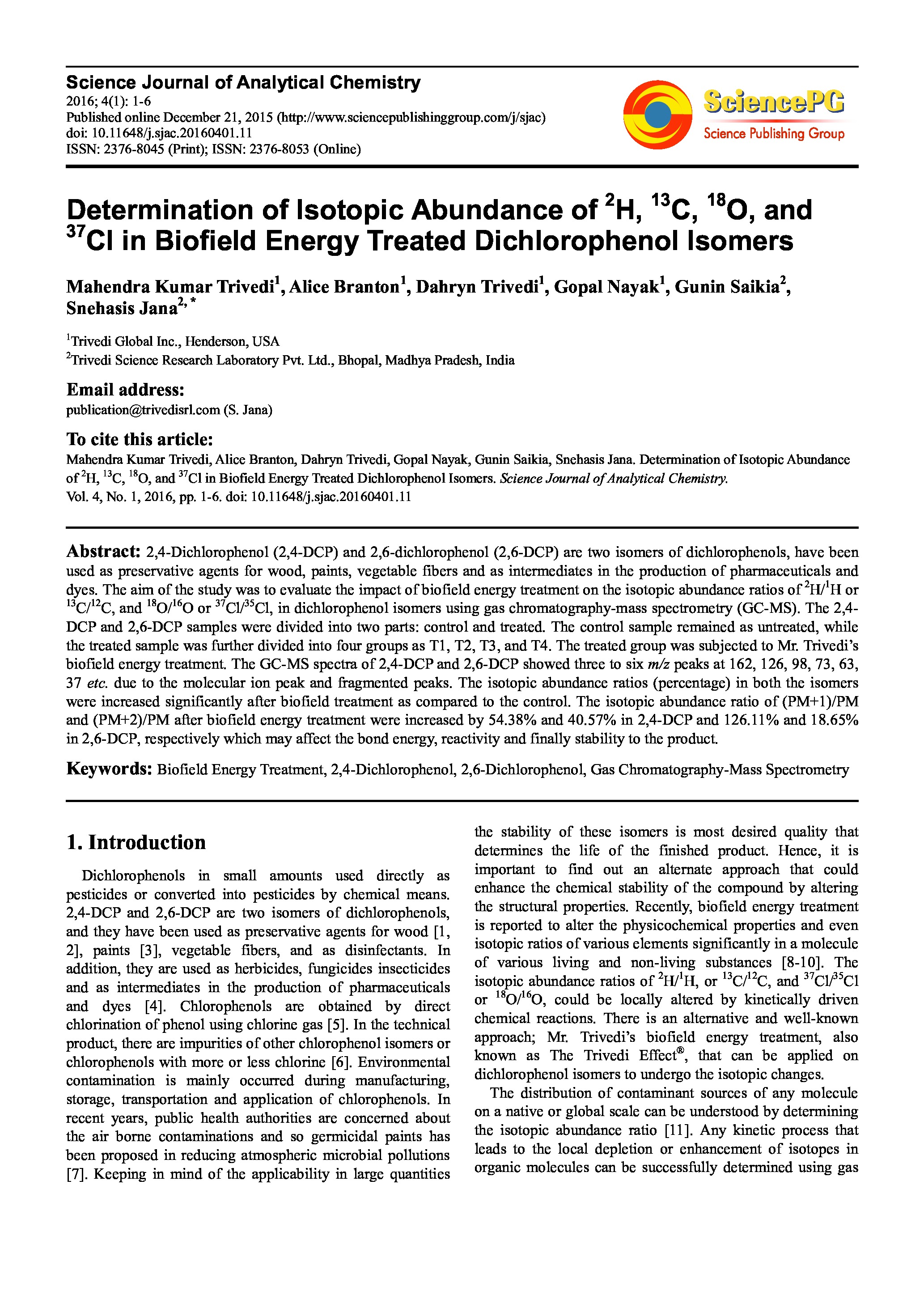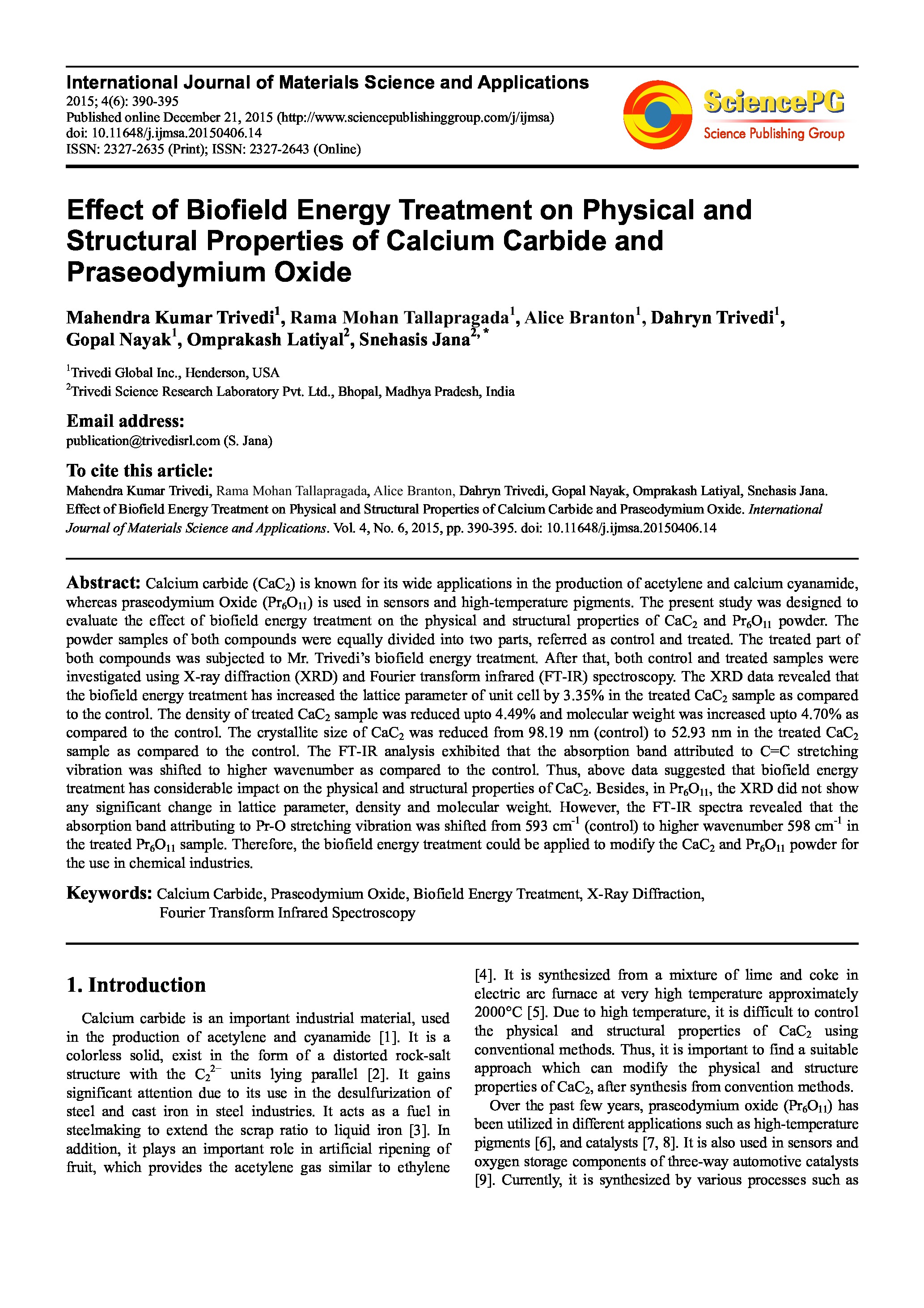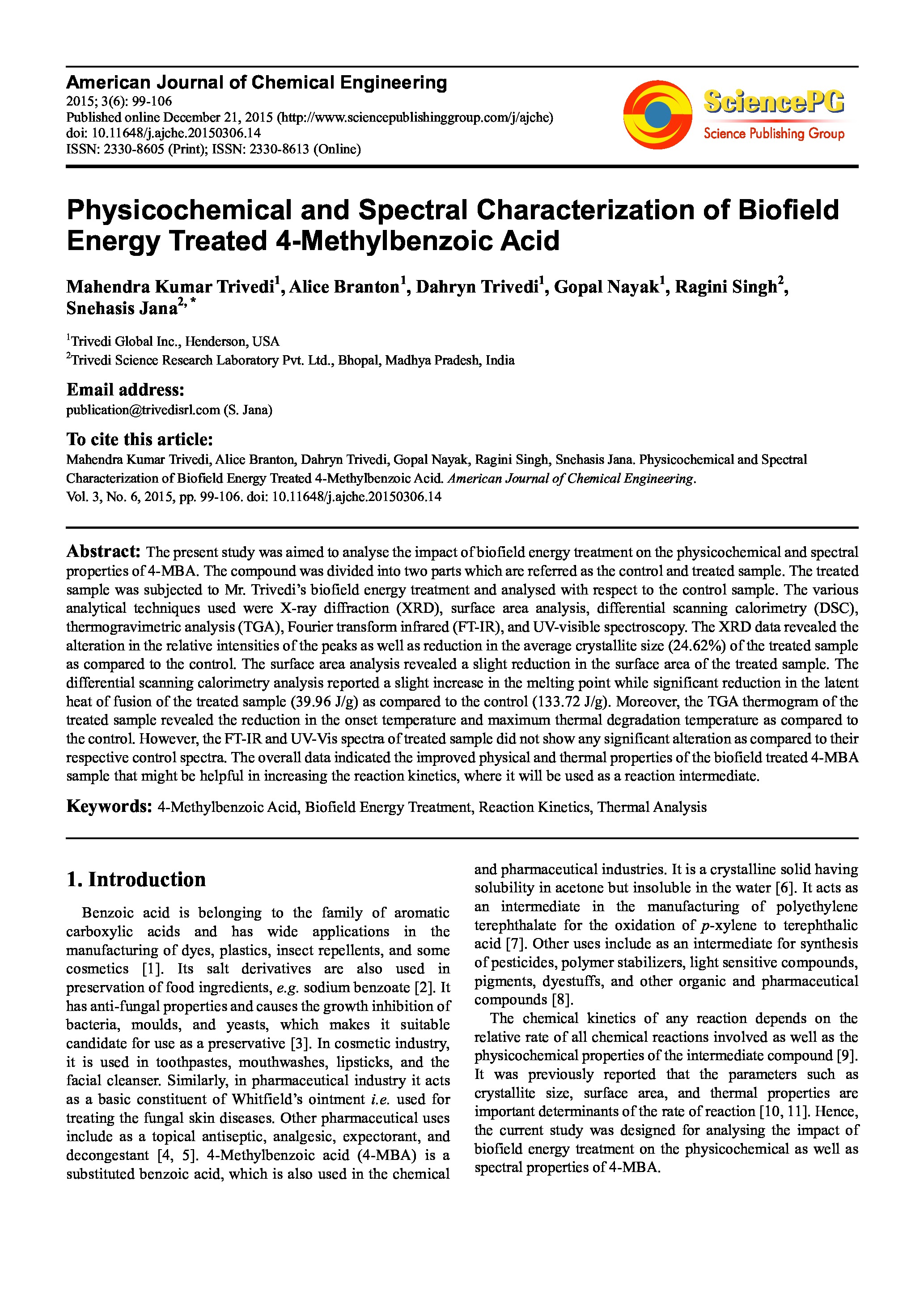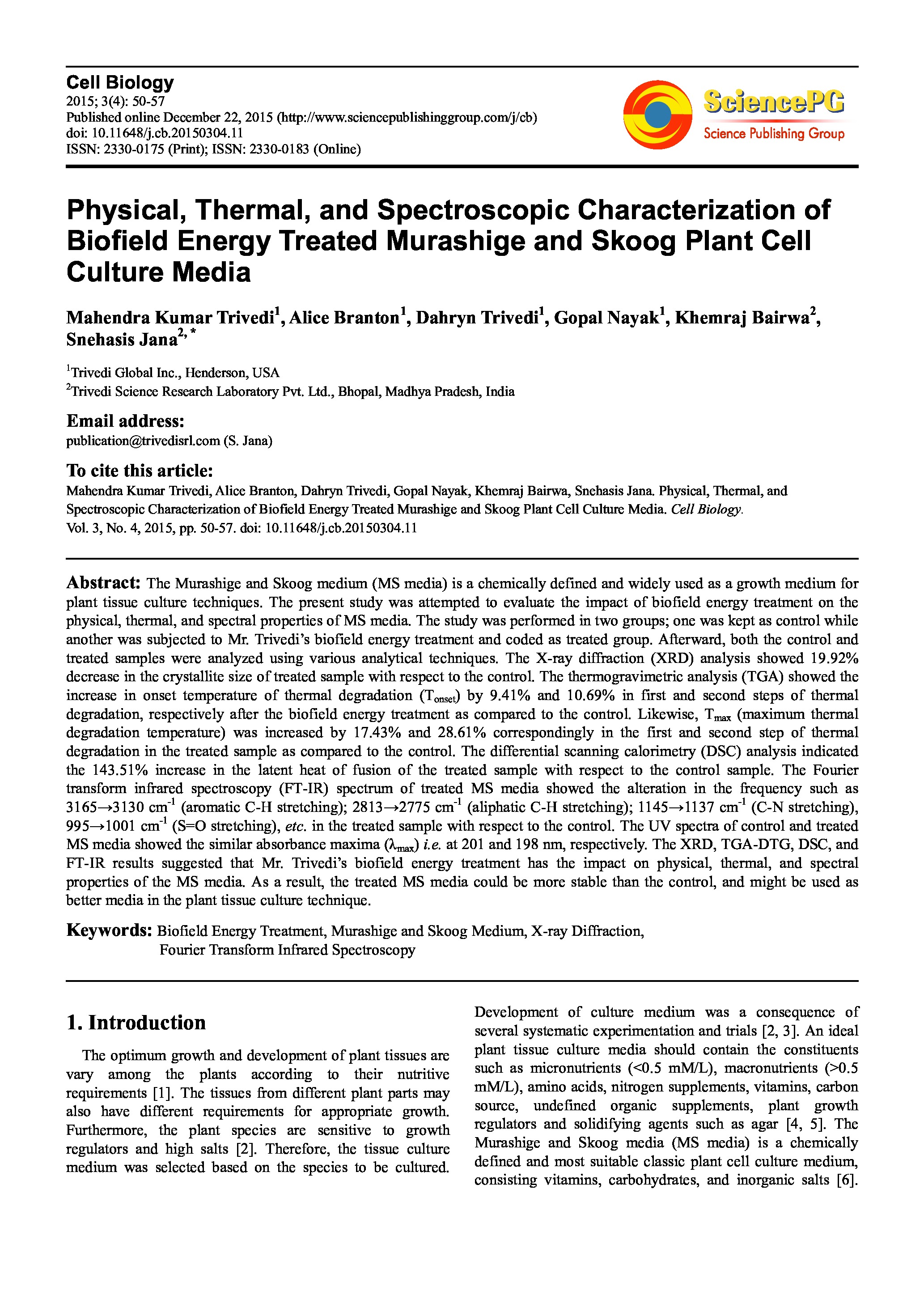Date of upload:
19.12.2016
Co-author:
Mahendra Kumar Trivedi, Alice Branton, Dahryn Trivedi, Gunin Saikia, Snehasis Jana
Abstract:
2,4-Dichlorophenol (2,4-DCP) and 2,6-dichlorophenol (2,6-DCP) are two isomers of dichlorophenols, have been used as preservative agents for wood, paints, vegetable fibers and as intermediates in the production of pharmaceuticals and dyes. The aim of the study was to evaluate the impact of biofield energy treatment on the isotopic abundance ratios of 2H/1H or 13C/12C, and 18O/16O or 37Cl/35Cl, in dichlorophenol isomers using gas chromatography-mass spectrometry (GC-MS). The 2,4-DCP and 2,6-DCP samples were divided into two parts: control and treated. The control sample remained as untreated, while the treated sample was further divided into four groups as T1, T2, T3, and T4. The treated group was subjected to Mr. Trivedi’s biofield energy treatment. The GC-MS spectra of 2,4-DCP and 2,6-DCP showed three to six m/z peaks at 162, 126, 98, 73, 63, 37 etc. due to the molecular ion peak and fragmented peaks. The isotopic abundance ratios (percentage) in both the isomers were increased significantly after biofield treatment as compared to the control. The isotopic abundance ratio of (PM+1)/PM and (PM+2)/PM after biofield energy treatment were increased by 54.38% and 40.57% in 2,4-DCP and 126.11% and 18.65% in 2,6-DCP, respectively which may affect the bond energy, reactivity and finally stability to the product.




